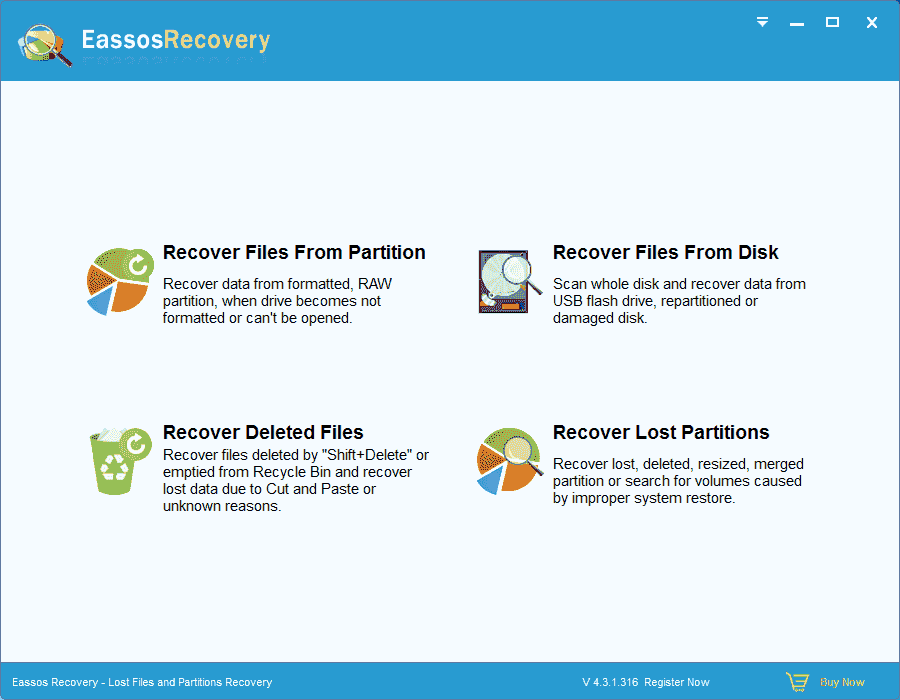We are living in an age of information and technology, and all of our data is stored on storage media like computer, external hard disk, USB flash disk, SD card, etc. Convenient as it is, sometimes this way of data storage makes troubles, such as data loss. Data is divided into two types, one is suffering from data loss and the other is about to. Therefore, it is absolutely necessary that we learn some knowledge about data recovery to deal with those possible data loss problems.
We should clear that data recovery doesn’t only belong to data recovery experts; common computer users are also entitled to do data recovery on their own with the help of proper data recovery tools.
Common data loss scenarios
- Files are deleted or formatted by accident;
- Disk can’t be opened and reports error “The disk in drive G is not formatted. Do you want to format it now?”;
- Partition gets lost due to careless and incorrect operations like deletion, system restore;
- Virus attack.
- Though most of the times data recovery technology can help us retrieve lost data, the most effective to avoid data lost is to backup data timely and regularly.
Data recovery solutions
A wide variety of reasons can cause data loss, but they can be classified into two types: physical damage and logical damage. Data loss caused by physical damage can’t be solved by common users, because recovering data from physically damaged hardware requires multiples techniques. Sometimes it needs to replace parts of the disk. That work can be conducted by professional data recovery companies.
What common computer users can deal with is recovering data from logically damaged storage devices, for most of these problems can be solved by data recovery software, such as Eassos Recovery.
How does data recovery software work?
When you delete a file from computer, it is put into Recycle Bin by operating system, so that it can be restored at any time. But do you know where the deleted file is going when the Recycle Bin is emptied orthe file is deleted by keys Shift and Delete? To make out this, we need to know the way operating system stores files.
A file on computer disk is not stored in a series of continuous space, but it is stored in several blocks (clusters) scattered in different places. Vividly, we can compare hard disk to a building with numerous rooms that are numbered by figure. Say a file takes 5 rooms which may be from 501 to 505 or just five random rooms like 501, 217, 988, 331 and 658. These rooms are called data area. So, to manage files, operating system need to know the information about file size and location, i.e. how many rooms and which room it takes. Let’s call the information “system area”. Simply, a file consists of data area and system area. When operating system deletes a file, it only modifies the system area instead of the data area. Operating system marks the data area “free”, in order that new files can be saved there. Therefore, deleted files can be recovered before they are overwritten by new files.
